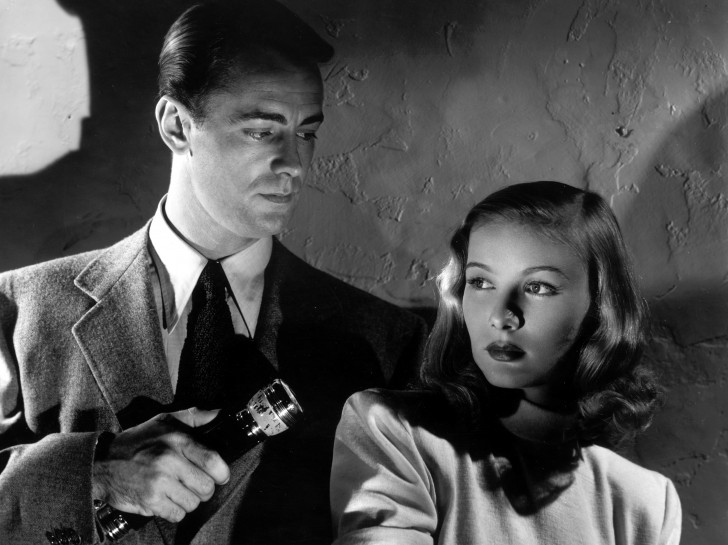
This Gun For Hire
The Blue Dahlia
Eager to cement Veronica Lake’s rise to fame, Paramount designed as a showcase for her an adaptation of Graham Greene’s novel, A Gun for Sale, which had been in the works since the novel’s 1936 publication. Lake was cast as the nightclub singer caught up in an ambiguous relationship with a hired killer. The film’s taut narrative displays a moral ambiguity remarkable for early 1940s Hollywood. Under the Production Code, sympathetic depictions of murderers were proscribed, and the project was clearly meant to present the singer’s police detective boyfriend as the hero. But fourth-billed Alan Ladd proved so indelible as the killer that he stole the movie and became one of Paramount’s most important male stars for the next ten years.
The dislocations affecting both returning veterans and civilians caused by the reintegration of troops following World War II are now commonly seen as part of the contributing factors to the unease, malaise and even paranoia that drive the postwar film noir, and they became a frequent narrative concern as well. Such is the case with The Blue Dahlia, about a returning Navy pilot who comes home to find his wife has been unfaithful in his absence. They quarrel, and when she turns up dead, he is wanted for her murder. Paramount hired Raymond Chandler to write the screenplay as a reunion for Lake and Ladd, and his particular ability to integrate both humor and poetry into hard-bitten dialogue gives the film much of its enduring value.







































